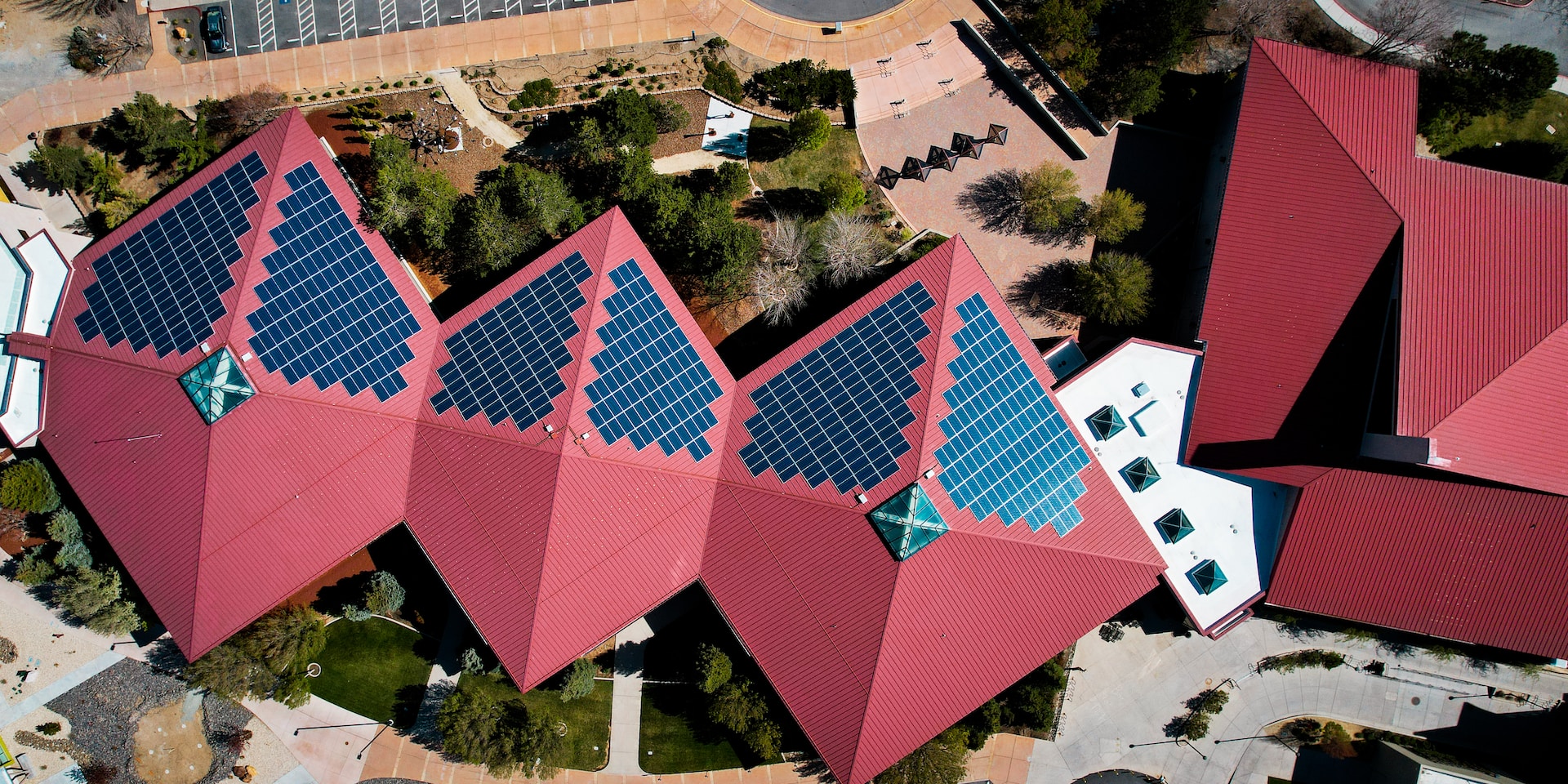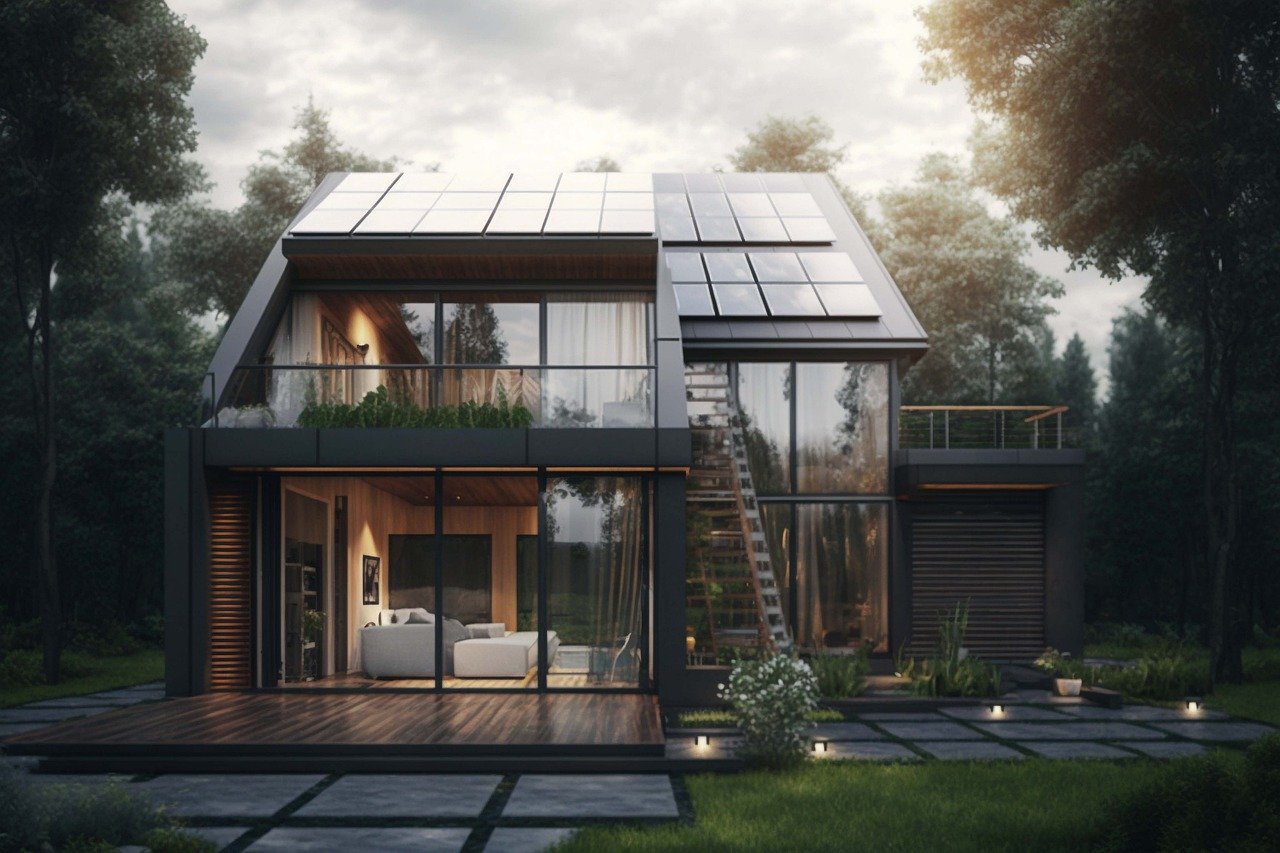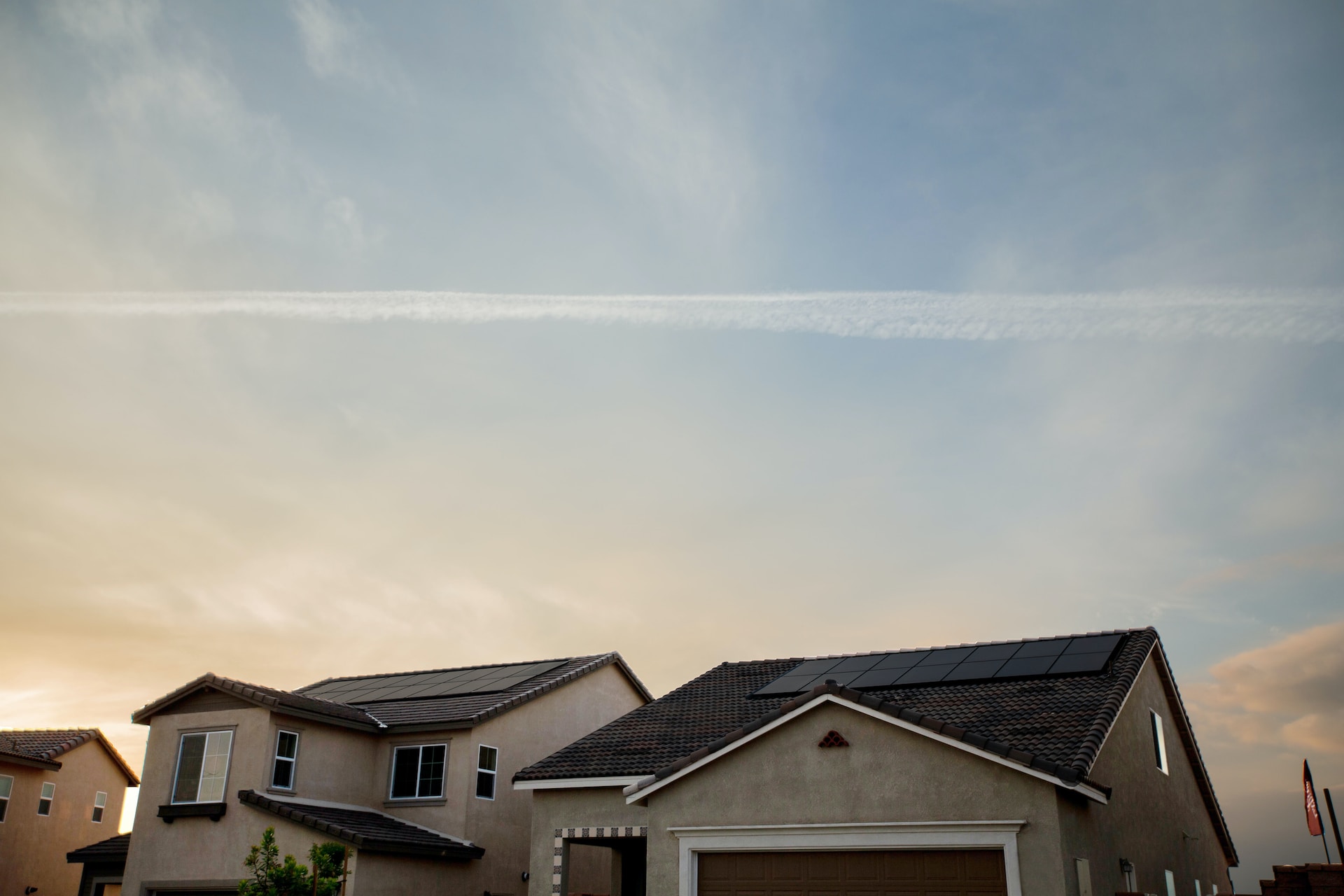
Solar 101
What is a Solar Array?
Optivolt
June 7, 2023
6 min read
A solar array is the centerpiece of any solar power system. Harnessing the power of the photovoltaic effect, a solar array is able to turn sunlight into usable electricity for a home or RV.
The word array is used to describe an ordered series or arrangement of objects. A solar array is a group of solar panels wired together in a parallel or series circuit. This idea may also be referred to as a solar panel array, or an array of solar panels.
A similar concept happens on a smaller scale within each solar panel, where individual solar cells are wired together to create a solar panel.
The size of a solar array may refer to the number of solar panels it contains, or the total power output wattage.

How Many Solar Panels Do I Need in My Array?
The average American home consumed 886 kWh of electricity per month in 2021. At this rate, a home may need up to 37 solar panels for full energy independence, depending on the home's location. Sun hours, temperature, and other factors can affect the amount of energy that a solar array is capable of producing.
In order to determine how many solar panels you need for your home, you need to find out how much energy you expect to use. Look at past energy bills, finding your highest month's usage. Summer air conditioning and winter heating play a big role in energy consumption — make sure to account for this when determining the maximum electricity usage you expect.
Once you have your estimated monthly energy usage, you can do a simple calculation to determine the solar array wattage needed. Consider this formula:
Energy Production = Array Wattage × Sun Hours
We will assume the average of 886 kWh of electricity usage and 2 peak sun hours per day, or 60 hours per month (this can vary wildly with location and season). Let's fill in the data we have:
886 kWh Energy Production = Array Wattage × 60 Sun Hours
Array Wattage = 886 kWh ÷ 60 hours = 14.77 kW
So, we need a solar array with a power output of 14.77 kW. Most residential solar panels are rated at 400 watts, so let's use that number to determine how many solar panels we need to fulfill an array of 14.77 kW (14,770 watts):
14,770 watts ÷ 400 watts per panel = 37 panels
So, an average American home may need a solar array with 37 panels to completely offset the home’s energy consumption.
Read our solar array sizing guide for a more detailed look at determining the number of solar panels you need. Every solar power system is different. You may need less panels if you receive more sun hours or use less energy.
Roof space or budget concerns may prevent you from powering your whole home with solar energy. Instead, many homeowners use a small solar array to reduce the amount of power they draw from utility companies. In turn, this lowers their monthly electric bills.

Can You Add More Panels to an Existing Array?
While it may be technically possible, adding more panels to an existing array is usually not recommended. Trying to do this usually results in more costs and complications than one would imagine.
When you add more panels to an array, the power output changes. This could result in overloading the current rating of the charge controllers, connectors, or string inverters that are in use.
Consider these questions if you are thinking about adding more solar panels to your system:
- Do you have enough roof space for more solar panels?
- Residential systems usually have an inverter that converts the DC power from solar panels into AC power for the electric grid. Would you need to upgrade the capacity of this inverter?
- What permits and fees are required?
- Is the same solar panel model still available for purchase? You may run into issues when trying to use mismatched panels.
If you're still thinking about going forward with adding panels, consult a professional electrician or solar installer. Working with high-powered solar systems is dangerous enough, and now you will be attempting to provide more panel output to system components that may not have been designed to receive such power.
What Direction Should a Solar Array Face?
A solar array should ideally point in the direction that receives the most direct sunlight. In the Northern Hemisphere, solar panels should face true south. In the Southern Hemisphere, a solar array should point north.
The tilt angle of your solar array also plays a role in the amount of energy it can generate. In North America, a tilt angle of 40° is a good estimate for year-round power generation. However, there are methods available for determining a more ideal tilt angle that will optimize your energy generation. You can also change the tilt angle of your array with each season as the sun travels at varying paths through the sky.
For a more detailed look at these ideas, check out our solar panel orientation guide.

How Does Shading Affect Solar Arrays?
Partial shading can have drastic effects on the output of a solar array. Depending on the way that your panels are wired, shading on one panel can affect other panels in the array.
The negative effects of partial shading begin at the panel receiving shade. The individual cells of most solar panels are wired in series. Due to the nature of series circuits, the voltage of the cells are added up while the current (amperage) remains the same throughout. This means that if one cell is outputting a lower current, the rest of the cells are brought down to the same current. A solar panel is only as strong as its weakest link.
This same concept applies to solar arrays that are wired in a series circuit. When one panel becomes shaded, the rest of the panels' currents are brought down with it.
There are a few ways to combat this shading issue, including using a parallel circuit and shade-tolerant solar panels. The Optivolt 100W solar panel solves both of these issues. The panels feature their innovative Pulse technology that produces up to 60X more power in shade when compared to traditional solar panels.
Plus, these shade-tolerant panels are designed to be wired in a parallel circuit (in which the currents are added together and the voltage remains the same). The high-voltage version allows more panels to be wired together in parallel without raising the current to excessive levels.
Key Takeaways
Here are the main ideas to remember about solar arrays:
- A solar array is a group of panels wired together in series or parallel. The collection of panels generate electricity as a system, much like how dozens of solar cells make up a single solar panel.
- You may need a few dozen panels in your solar array to produce enough energy for the average household. However, even a small solar array will have a big impact on your electric bills.
- Adding more solar panels to an existing array is a complicated, potentially-dangerous process. Consult a professional before attempting to do so.
- In the Northern Hemisphere, your solar array should be facing true south to maximize energy generation.
- If one panel in an array is shaded, the rest of the connected panels may be affected. Shade-tolerant solar panels and parallel circuits can mitigate this issue.
Optivolt is a technology company providing resilient, sustainable energy solutions for humans. Their unrivaled Pulse technology is integrated into their 100W shade-tolerant solar panels, paving the way for solar arrays to produce more energy in adverse conditions.